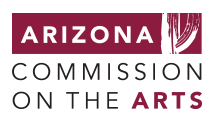According to new data reported by the Arizona Department of Education and Arizona Commission on the Arts, 89% of K-12 students in the state have access to education in at least one arts discipline. Participation, however, dropped 5% between the 2018-19 and 2019-20 school years.
These statistics are only two of the insights offered by the latest update to the state’s Arts Education Data Project. The update comprises self-reported data from nearly 2,000 schools, up through the 2019-20 school year.
The new data are featured in both an executive summary report and an interactive explorer at https://azarts.gov/azartsed-explorer/.
“The Arts Education Data Project is an incredible tool that helps highlight programs and classes that schools offer to students across our state,” said Superintendent of Public Instruction Kathy Hoffman. “I am grateful to know that more and more of Arizona’s students have access to opportunities to engage in the arts. Arts provide a necessary and unique outlet for our students to creatively express themselves and share their stories. I look forward to continuing to collaborate with the Arizona Commission on the Arts to highlight the importance of the arts for our students.”
The Data
The data reflect both access (the presence of a course of instruction in at least one arts discipline) and participation (student enrollment).
Additionally, the analysis considers such factors as
- school configuration (Elementary, Middle, or High School),
- school type (traditional public or charter),
- locale (urban, suburban, rural, etc., based on classification codes devised by National Center for Education Statistics), and
- number of students who qualify for free and reduced-price lunch.
Key Findings: Access to Arts Instruction
Access is the lowest threshold measure for arts education. It is used to determine if a school offers at least one arts discipline with any student enrollment. This only indicates presence of program, not breadth, and is used primarily to determine where schools may be operating without arts instruction.
- Most students (89%) had access to at least one arts discipline; 76% had access to the state-required two disciplines.
- 11.3% of students did not have access to any arts instruction. This is an increase from the prior year’s rate of 8.6%.
- Schools where a high proportion of students were eligible for free or reduced-price lunch (FRL) were more likely to lack arts education (25%) than schools with a lower proportion of FRL-eligible students.
- Among students without access to the arts, nearly twice as many attended a charter school (18.1%) vs. a traditional school (9.9%).
Key Findings: Participation in Arts Instruction
- More than two thirds (67%) of all students participated in arts education courses. This represents more than 767,000 students. The percent participation rate has declined from 71% in 2019 representing 33,000 students.
- Arts enrollment was highest among students in elementary schools (79%) and lowest at high schools, 48%.
- However, overall arts participation was also highest in schools with a high FRL-eligible population (72%).
- Music (47%) and Visual Art (43%) have the highest student participation. However, there has been a decline from 2014 for both (Music = 52% and Visual Art = 50%)
- Arts enrollment was slightly higher in traditional schools than in charter schools (68% vs. 64%).
- The arts participation rate was highest in schools where the majority of students are Hispanic (73%) and was lowest in majority-Native American schools (59%).
- Schools in mid-sized suburbs had the highest arts participation rate (81%); schools in distant rural locales had the lowest rate: 50%.
The Data Explorer Dashboard
Beyond the Executive Summary Report, Arizonans can explore the data through an easy-to-use interactive online dashboard at https://azarts.gov/azartsed-explorer/. With intuitive controls and myriad visualization options, this powerful tool allows users to venture deep into the data, following whatever path they choose, including statewide geographic comparisons; county-, district-, and school-level reporting, and year-over changes in enrollment, to name just a few.
According to Elisa Radcliffe, the Arts Commission’s Arts Learning Manager, “This tool provides a picture of where Arizona’s schools currently stand, allowing school leaders, parents and advocates to ensure that every child in Arizona can participate in the arts.”



